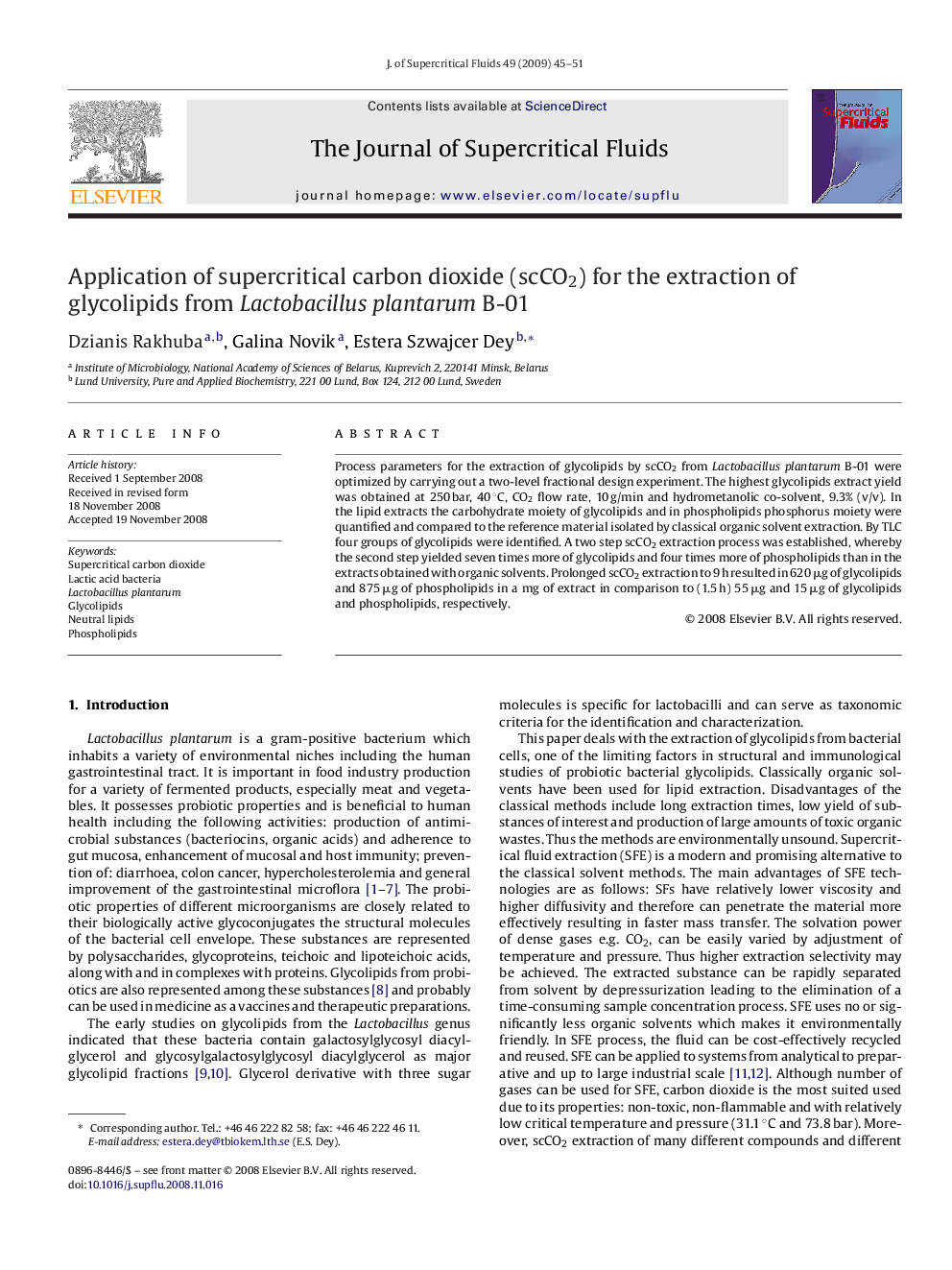| Article ID | Journal | Published Year | Pages | File Type |
|---|---|---|---|---|
| 231873 | The Journal of Supercritical Fluids | 2009 | 7 Pages |
Process parameters for the extraction of glycolipids by scCO2 from Lactobacillus plantarum B-01 were optimized by carrying out a two-level fractional design experiment. The highest glycolipids extract yield was obtained at 250 bar, 40 °C, CO2 flow rate, 10 g/min and hydrometanolic co-solvent, 9.3% (v/v). In the lipid extracts the carbohydrate moiety of glycolipids and in phospholipids phosphorus moiety were quantified and compared to the reference material isolated by classical organic solvent extraction. By TLC four groups of glycolipids were identified. A two step scCO2 extraction process was established, whereby the second step yielded seven times more of glycolipids and four times more of phospholipids than in the extracts obtained with organic solvents. Prolonged scCO2 extraction to 9 h resulted in 620 μg of glycolipids and 875 μg of phospholipids in a mg of extract in comparison to (1.5 h) 55 μg and 15 μg of glycolipids and phospholipids, respectively.
Graphical abstractProcess parameters for the extraction of glycolipids by scCO2 from Lactobacillus plantarum B-01 were optimized by carrying out a two-level fractional design experiment. The highest glycolipids extract yield was obtained at 250 bar, 40 °C, CO2 flow rate, 10 g/min and hydrometanolic co-solvent, 9.3% (v/v). In the lipid extracts the carbohydrate moiety of glycolipids and in phospholipids phosphorus moiety were quantified and compared to the reference material isolated by classical organic solvent extraction. By TLC four groups of glycolipids were identified. A two step scCO2 extraction process was established, whereby the second step yielded seven times more of glycolipids and four times more of phospholipids than in the extracts obtained with organic solvents. Prolonged scCO2 extraction to 9 h resulted in 620 μg of glycolipids and 875 μg of phospholipids in a mg of extract in comparison to (1.5 h) 55 μg and 15 μg of glycolipids and phospholipids, respectively. Figure optionsDownload full-size imageDownload as PowerPoint slide
